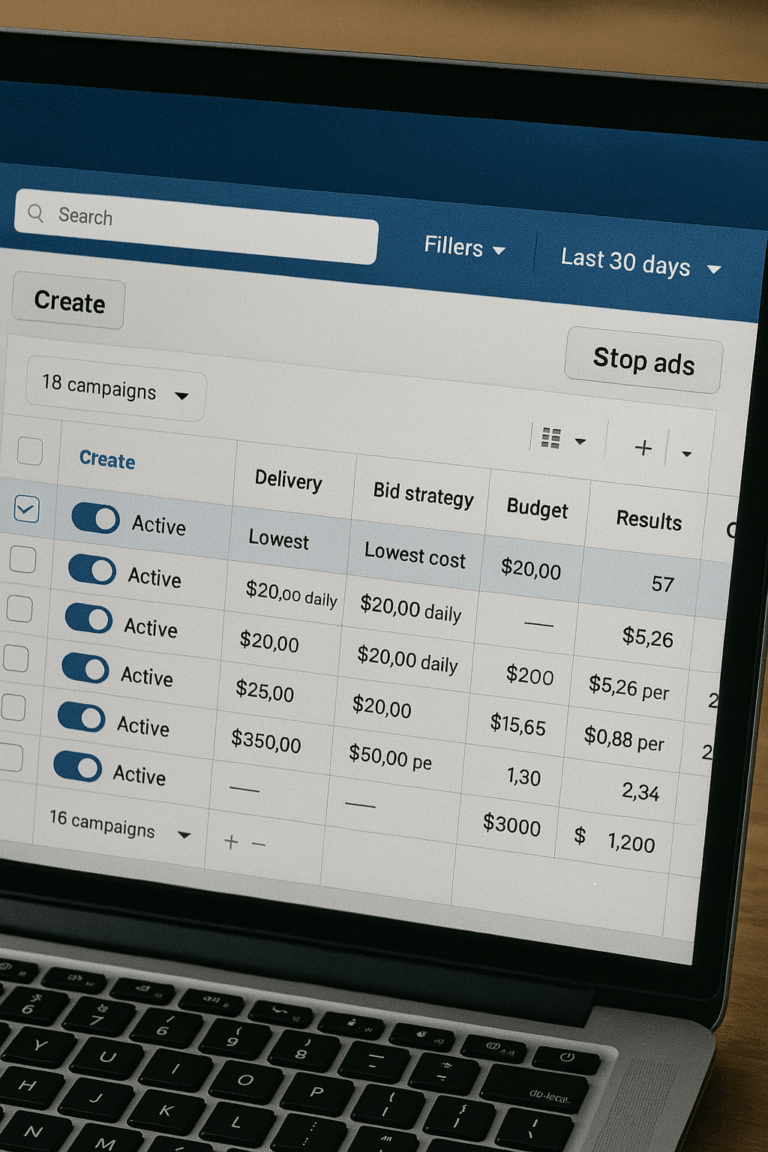Chapter 3: Reading and Acting on MMT Results

Understanding how to interpret MMT results and translate them into actionable business decisions is crucial for maximizing your testing investment. This guide walks through confidence intervals, iROAS interpretation, and decision frameworks for different result scenarios.
Understanding Confidence Intervals
What Confidence Intervals Tell You
A confidence interval provides a range around your estimated impact showing where the true effect likely lies. For example, if your test shows $100,000 incremental revenue with a 90% confidence interval of $50,000 to $150,000, we’re 90% confident the true lift falls within that range.
Narrow intervals: More precise estimates, higher confidence in results
Wide intervals: More uncertainty, proceed with caution
Intervals including zero: Results may not be statistically meaningful
Statistical Significance Thresholds
95% Confidence Level: Our standard threshold for making investment decisions
80-94% Confidence: Suggests positive trends but may require additional validation
Below 80% Confidence: Results likely due to random variation rather than marketing impact
Interpreting iROAS Results
Understanding iROAS in Business Context
Before applying standard iROAS thresholds, it’s essential to understand your business’s profitability requirements. Many businesses require iROAS of 3-4+ to achieve profitability when factoring in Cost of Goods Sold (COGS) and operational expenses (OPEX).
Example Business Context: If your brand has 33% gross margins and requires a 3x iROAS for immediate profitability, an MMT result showing 1.5x iROAS may appear insufficient. However, MMT measures short-term incrementality during the test period and doesn’t capture several important factors:
- Halo Effects: Unmeasured lift to other channels and tactics
- Long-term Brand Building: Customer lifetime value beyond the test window
- Carryover Effects: Continued conversions after campaign end
- Cross-Channel Attribution: Assisted conversions in other marketing channels
This means an iROAS of 1.5 during a 4-8 week test might actually represent 2.0+ iROAS when accounting for these longer-term and cross-channel effects.
Middle and Bottom Funnel Campaigns
iROAS > 1.5: Strong performance – scale with confidence
- Clear positive returns that likely exceed full profitability when accounting for halo and carryover effects
- Immediate scaling opportunities
- High confidence in continued performance
iROAS 1.0-1.5: Solid performance – optimize before scaling
- While potentially below immediate profitability thresholds, these results often indicate strong long-term performance when halo effects are considered
- Test optimization strategies before major scaling
- Monitor closely during any expansion and measure extended attribution windows
iROAS < 1.0: Underperforming – pause or significantly optimize
- Not generating positive returns
- Investigate fundamental issues before continuing
- Consider reallocating budget to better-performing channels
Top of Funnel Campaigns
iROAS 0.5-1.0: Good performance for awareness-focused campaigns
- Strong performance for upper-funnel objectives, where long-term brand building and customer acquisition often justify lower immediate returns
- Consider long-term brand value and customer lifetime value beyond immediate returns
- Monitor for delayed conversion effects extending beyond test period
iROAS 0.25-0.5: Acceptable but monitor closely and optimize
- Marginally effective for immediate returns, but may be justified for brand building if customer lifetime value supports longer-term ROI
- Focus on optimization opportunities
- Track extended attribution windows and cross-channel lift
iROAS < 0.25: Reassess strategy or pause campaign
- Poor performance even for awareness campaigns
- Fundamental strategy review needed
- Consider alternative awareness tactics
Decision Frameworks for Different Result Scenarios
Understanding Test Duration vs. True Marketing Impact
Most MMT tests run 30-90 days, while true top-of-funnel campaigns can drive effects for as long as 24 months. Because of this extended impact timeline, we’re comfortable with comparatively “low” iROAS figures during the test period, knowing that the campaign will drive future consideration, brand recall, and conversions well beyond the measurement window.
This temporal mismatch between test duration and true marketing impact explains why our decision frameworks account for long-term value rather than requiring immediate profitability during the test period. The following framework helps translate different MMT outcomes into actionable business decisions.
MMT Results Decision Matrix
| Result Type | Confidence Level | Immediate Response | Strategic Context | Next Actions |
|---|---|---|---|---|
| Strong Positive | 95%+ | Scale investment immediately | Clear underinvestment with long-term value | Test scaling limits, expand to similar markets |
| Moderate Positive | 90-95% | Optimize before scaling | Solid performance with improvement potential | A/B test optimizations, plan extended measurement |
| Inconclusive | 70-89% | Maintain current approach | May need longer measurement window | Extend test duration, investigate external factors |
| Negative | 95%+ | Reduce or pause investment | Ineffective even with long-term considerations | Reallocate budget, test alternative approaches |
Interpreting Strong Positive Results
When MMT delivers high iROAS with strong statistical confidence, this signals clear underinvestment in a channel with proven long-term value potential. These results create immediate scaling opportunities because the measured incrementality during the test period represents just the beginning of the campaign’s true impact.
The strategic implication extends beyond the test results themselves. Strong positive results often indicate competitive advantage opportunities where your brand can gain market share through increased investment. Most importantly, these results provide a foundation for additional testing to identify scaling limits and replicate successful strategies across similar markets or tactics.
Working with Moderate Positive Results
Moderate positive results present the most nuanced decision-making scenario. While the measured iROAS may fall below immediate profitability thresholds, these results often indicate solid long-term performance when considering extended impact periods. The key is optimization before scaling, using the test insights to improve performance while allowing long-term effects to mature.
Rather than immediate budget increases, focus on tactical improvements through A/B testing creative, targeting, or bidding strategies. This approach maximizes short-term efficiency while positioning the channel for stronger long-term returns. Plan follow-up tests with extended measurement windows to capture the full value potential as optimization improvements compound with natural carryover effects.
Navigating Inconclusive Results
Inconclusive results often reflect the challenge of measuring long-term marketing impact within short test windows rather than fundamental channel ineffectiveness. This is particularly common with top-of-funnel campaigns where delayed effects may not fully manifest during the test period.
The recommended approach involves extending test duration when possible, especially for awareness campaigns where longer measurement periods may reveal delayed attribution effects. Additionally, investigating external factors becomes crucial – competitive activity, seasonal variations, or platform changes during the test period may have obscured true marketing impact. Consider Media Mix Modeling for historical analysis of long-term patterns that can provide context for seemingly inconclusive short-term results.
Responding to Negative Results
When MMT shows negative or very low iROAS with high statistical confidence, this indicates fundamental issues that persist even when accounting for extended impact periods. These results warrant immediate action to prevent continued investment in ineffective channels.
The strategic response involves reallocating budget to better-performing channels while conducting root cause analysis. Understanding why performance was poor despite long-term impact considerations helps inform future testing strategies. Sometimes negative results reflect market saturation, poor audience-channel fit, or execution issues that can be addressed through alternative approaches within the same channel.
Expected Timeline and Deliverables
Timeline from Setup to Results
Week 1: Market selection and test design finalization
Week 2: Campaign setup and pre-test validation
Weeks 3-6+: Test execution and monitoring (duration varies by tactic)
Week 7+: Analysis, statistical validation, and reporting
Week 8+: Results presentation and strategic recommendations
Recommended MMT Analysis Structure
A comprehensive MMT program should provide insights across multiple phases to ensure reliable decision-making. The analytical framework typically progresses from initial validation through final strategic recommendations, with each phase building upon previous findings.
Pre-Analysis Foundation: Before launching any test, establish clear success criteria through power analysis and market selection rationale. This foundation ensures that subsequent results can be interpreted within proper statistical and business contexts, preventing post-hoc rationalization of outcomes.
Performance Monitoring: Throughout the test period, continuous monitoring identifies potential issues early while tracking progress toward statistical significance. This ongoing analysis enables quick course corrections and builds confidence in final results through consistent trend validation.
Statistical Validation: Upon test completion, rigorous statistical analysis determines both the magnitude and reliability of observed effects. This includes confidence interval calculation, significance testing, and quality assurance metrics that validate the experimental design’s effectiveness.
Strategic Translation: The final phase translates statistical findings into actionable business recommendations, accounting for long-term impact considerations and integration with broader marketing strategy. This ensures MMT insights drive meaningful business decisions rather than remaining isolated data points.
Core Insights and Analytical Components
Incrementality Measurement: The primary output quantifies true causal impact, separating marketing-driven results from natural business fluctuations. This includes both point estimates and confidence intervals that reflect measurement precision.
Scaling Guidance: Analysis should provide clear direction on whether and how to scale successful tactics, including identification of potential saturation points and optimal investment levels based on observed performance curves.
Cross-Channel Context: Results interpretation considers how tested channels interact with broader marketing ecosystem, accounting for halo effects and potential cannibalization that may not be directly measured during the test period.
Risk Assessment: Comprehensive analysis includes downside protection recommendations, helping identify early warning signs and establishing clear criteria for campaign adjustments or termination.
Implementation Roadmap: Strategic recommendations translate into specific implementation steps, timeline considerations, and success metrics for ongoing optimization beyond the initial test period.
Early Termination Guidelines
When to Pause Tests Early
Holdout Tests: If revenue drops significantly more than expected based on channel’s estimated incrementality
Growth Tests: If no measurable lift appears after sufficient time for the channel’s typical conversion window
External Disruptions: Major promotional events, supply chain issues, or competitive actions affecting test validity
Risk Mitigation During Testing
Daily Monitoring: Track key metrics for unexpected changes
Performance Thresholds: Establish clear criteria for early termination
Stakeholder Communication: Regular updates on test progress and any concerns
Budget Reallocation: Plans for redirecting spend if tests are paused early
Integrating Results into Strategy
Short-Term Actions
- Immediate budget reallocation based on results
- Campaign optimization implementation
- Performance threshold adjustments
Long-Term Planning
- Annual budget planning integration
- Channel mix strategy refinement
- Future testing roadmap development
Understanding how to properly interpret and act on MMT results ensures your testing program drives meaningful business impact and continuous marketing performance improvement.
Next Steps: Learn about MMT limitations and when alternative approaches work better
Our Editorial Standards
Reviewed for Accuracy
Every piece is fact-checked for precision.
Up-to-Date Research
We reflect the latest trends and insights.
Credible References
Backed by trusted industry sources.
Actionable & Insight-Driven
Strategic takeaways for real results.






















